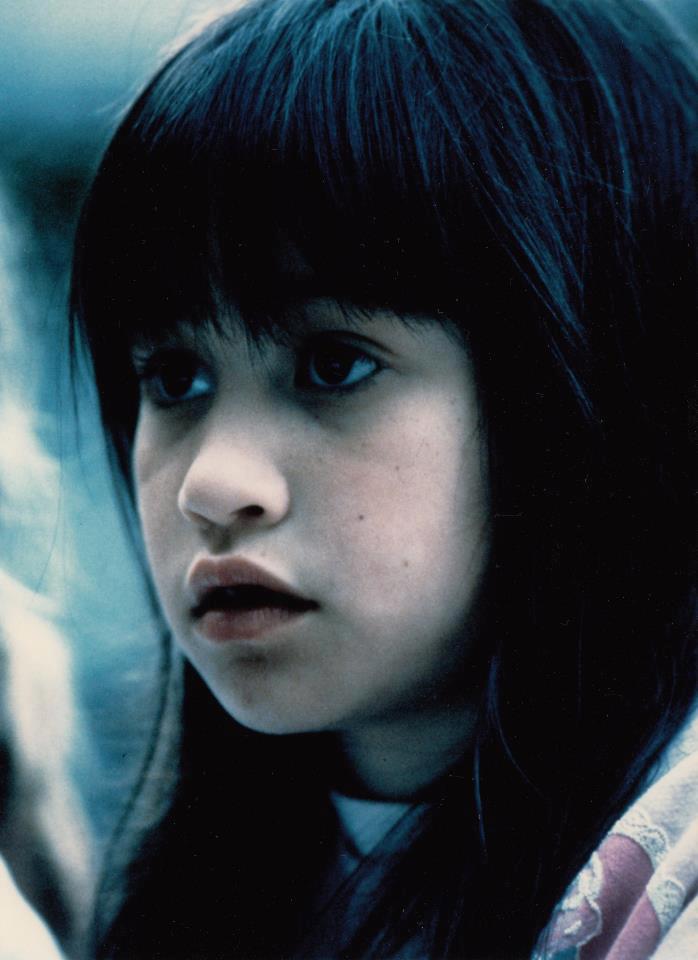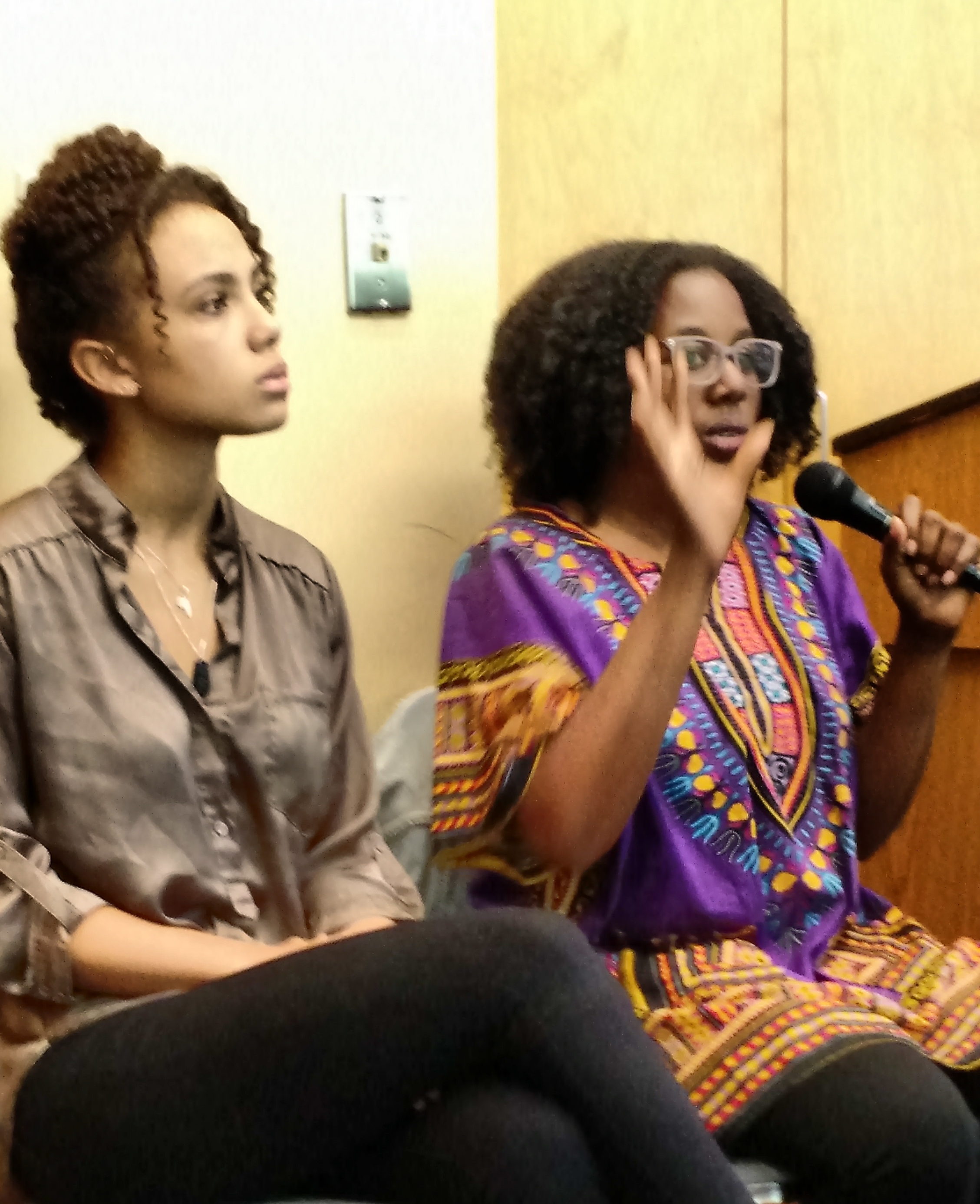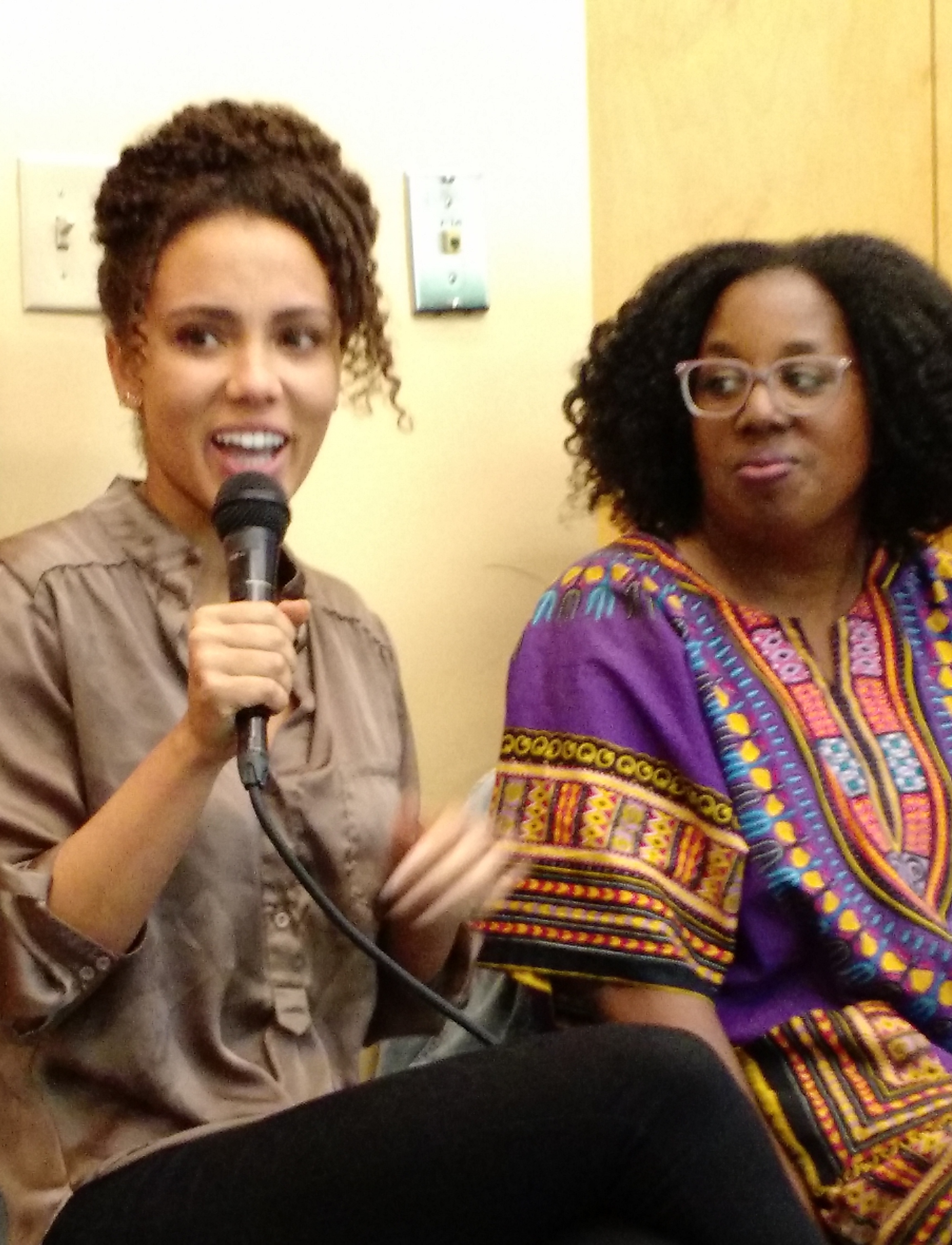Race, Difference, and Discomfort

When our first-born daughter was four, she asked me why she was the only one at her  preschool who didn’t have a white mother.
preschool who didn’t have a white mother.
I don’t exactly recall my answer to Natalie’s question, posed to me over twenty-five years ago. I’m sure I made some attempt at explaining that my heritage – Filipino and Mexican – made up part of who she was. The other part came from her dad, who is white. Our daughters have my dark eyes and dark hair, but Natalie has my husband’s skin tone and Ana has mine.
I was reminded of Natalie’s question recently at work when I helped organize and host the fourth in a series of literary readings intended to spark discussion of race and racism. I work for King County, which through its Equity and Social Justice Initiative encouraged employees to submit proposals that would help advance the goals of ESJ in or out of the workplace. The team I’m on was funded to produce four events as part of the ESJ training available to employees. The format consisted of two local poets presenting their work followed by a facilitated discussion on race and racism. Poets featured earlier this year were Quenton Baker and Casandra Lopez, Troy Osaki and Hamda Yusuf, and Anis Gisele and Shin Yu Pai.
In our last event, Kiana Davis and Djenanway Se-Gahon, two extremely poised and  articulate young women, presented work that referenced a defining moment in childhood for them.
articulate young women, presented work that referenced a defining moment in childhood for them.
Kiana described how when she was four she wanted a doll, but could find none on the store shelf that looked like her. It made her believe that little brown girls were invisible. “We learn what’s beautiful and what’s ugly as we grow up,” she said.
When Djenanway was in kindergarten, her teacher singled her and two other children out for special attention by  asking the children with “melanin in their skin” to sit in the center of the carpet as a prelude to their celebration of Martin Luther King. Djenanway said that over the years she’s had to learn to dissociate the words different and discomfort because they had been so fused in that kindergarten moment.
asking the children with “melanin in their skin” to sit in the center of the carpet as a prelude to their celebration of Martin Luther King. Djenanway said that over the years she’s had to learn to dissociate the words different and discomfort because they had been so fused in that kindergarten moment.
When Natalie first observed that she was different from her peers for not having a white mother, I’m sure that I tried to respond in a way that assumed she was asking out of curiosity and not shame or discomfort. I wanted to set the tone for similar experiences she was bound to have in the future.
I knew my children’s experience would be different from mine. Where I grew up, I saw brown and black people in my neighborhood every day. Even so, I didn’t escape childhood without wishing I’d been born blonde and blue-eyed. As Kiana said, “We learn what’s beautiful and what’s ugly as we grow up.”
In elementary school, when Natalie’s friends realized that darker-skinned Ana was her sister, they wondered if Ana had been adopted. Another time, when a classmate of Natalie’s saw me, she asked Natalie if I was the family’s nanny. Such was the experience of these students when it came to people of color.
When my husband and I bought our house in North Seattle in 1984, only sixteen years had passed since the racial restrictive covenants in place in my neighborhood had finally been outlawed. Thirty years later, it’s still rare for me to see more than a few people of color where I live. Change takes time, especially if access to housing and other rights have been historically restricted through social institutions.
The ESJ Literary Project at work gives me hope that change does happen. Bringing writers of color into the workplace to share their stories has people listening, thinking, admitting confusion and discomfort, and asking questions. “What do I do?” asked an audience participant who confessed to feeling helpless.
Kiana and Djenanway offered these actions: Go to the Reparations website. Be an ally. To get started on the latter in Seattle, try going here.